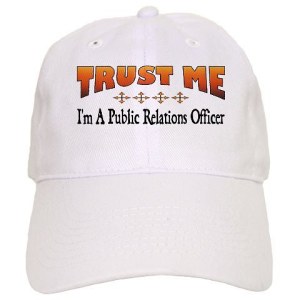Two years ago, while pursuing my Masters, I was assisting a professor for an Introduction to Communication course, where the topic of Public Relations inevitably came up. At this point, the professor, who interestingly had been a Journalism major, informed the class of mostly freshmen students that the public relations industry was really just a bunch of unethical people, hacks to be precise, spinning stuff to make their clients look good. As someone in the public relations field, to say I had to bite my tongue, would be an understatement.
Unfortunately, the reality is this professor’s view of the public relations industry is hardly an unpopular one. Multiple studies have shown that many in the public believe the industry and its practitioners to be unethical. The perception is that it is a less than respectable career field. Many consider public relations practitioners to be manipulators – that is, individuals who use their skills to come up with clever strategies, aimed at convincing individuals that what is wrong, is actually right. Some believe that the true work of a public relations practitioner is to distort reality, withhold information from the public and promote questionable industries and organizations, as well as bail them out of negative situations.
While some of these negative perceptions are not completely untrue, such as, it is the job of a public relations practitioner to assist an organization or firm in a crisis situation, it does not mean the work being done is unethical or meant to deliberately lie or mislead the public. However, these negative perceptions and opinions of the industry continue to persist, possibly making the biggest image crisis in P.R., the industry itself. So how can the industry turn things around?
There are a few steps that while they may not completely change the public’s view, at the least, it might make some regard the industry as more ethical than previously believed. Such as, establishing an industry approved and recognized Code of Ethics. Yes, I am aware that the International Public Relations Association (IPRA) and the Public Relations Society of America (PRSA) have both established industry codes. However, particularly in the case of the PRSA’s Code of Ethics, the language and tone of the Code is very passive and lacks authority and “bite.” It reads more like a suggestion of what practitioners should do rather than a stern declaration of “this is what should be done, no questions”. A Code of Ethics with a firmer voice and tone is necessary.
This leads me to a second and very important step that should be taken, if the practitioners want the public’s negative view of the industry to change. That is, a strict outline of specific consequences, should any of the rules of the Code be violated, must be established. With no standard for punishment, many understandably deem the Code meaningless.
Another important step is for more transparency and visibility from the industry. Public opinion and studies have shown that many still do not really understand or know what public relations practitioners do beyond media relations efforts. A greater depth of knowledge and understanding might alter some of the negative opinions.
Finally, there should be a greater promotion and visibility of all the nonprofit work done by the industry. Many individuals are aware of the promotional work for for-profit organizations, businesses, etc. but forget or are simply unaware of just how many NGO’s and nonprofit organizations the industry is just as heavily involved with and just how crucial the work they do for these organizations, is.
However, even with all that said, I question if the negative perception and opinion of the P.R. industry can ever really be changed. Especially, when the reality is the industry will likely always represent some companies and organizations deemed unethical, and crisis management will always be a key component of the work practitioners do. But maybe the problem is not so much the industry per se, but how it is often categorized.
I have found it interesting that while Advertising, for example, has its detractors, it does not seem to be met with nearly the same disdain and criticism as public relations. And I wonder if part of the problem is because P.R. is often categorized into the School of Communication, and often lumped in alongside Journalism, versus Advertising which is often categorized as a Business function. Consider how many former journalists who successfully transition from journalism to working in public relations. More importantly, the defining difference often outlined between Advertising and P.R. is that the former involves paid media, versus the latter which utilizes earned media.
In other words, there may be more of an “acceptance” of Advertising’s negative qualities because as with any business function, individuals view its bottom line as making profit. After all, the advertiser’s job is to convince the public to buy its product. Now do not misunderstand me, I am aware that it is considered unethical for advertisers to tell bold faced lies about their products and the advertising industry does recognize and punish for this. However, many in the public seem to willingly accept that advertisers may often employ obvious subtle manipulations, to get individuals to buy their product.
Public Relations however, is often considered a storytelling function of sorts. The public relations practitioners’ job is seen as promoting and telling their clients’ story and getting as much coverage for that story. Thus, perhaps there is a greater expectation and demand for complete truth. One key aspect of public relations is media coverage and for many, the media is supposed to be a bastion of truth and honesty. Thus, the rationale is that if something is covered in a paper or television news report, it should be honest and truthful. And perhaps it is this blurred line of public relations, intertwined with the media that increases the public’s ethical expectations for the field, and simultaneously increases their negative perception of it.
